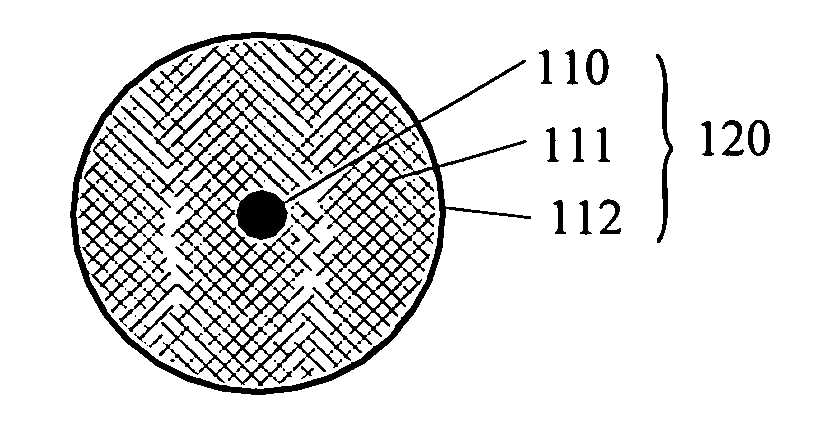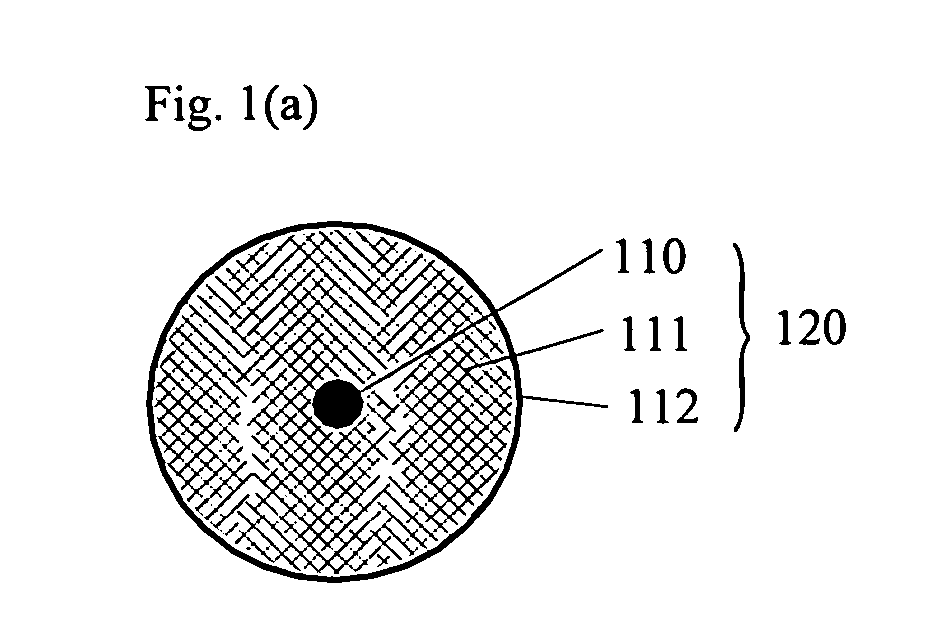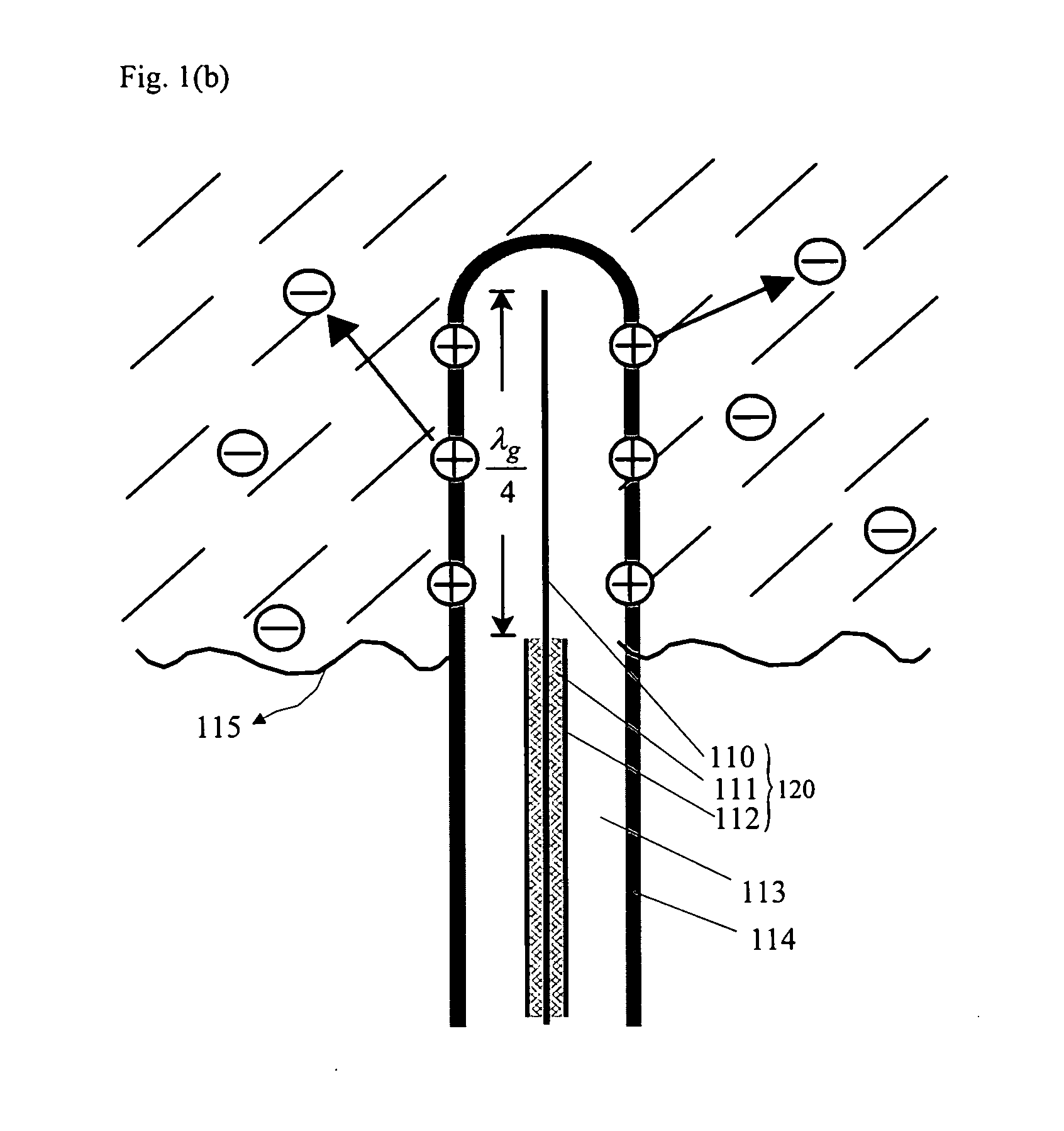In-vivo interstitial antennas
a technology of interstitial antennas and antennas, which is applied in the field of in-vivo interstitial antennas, can solve the problems of high risk of secondary infection, inability to concentrate energy around, and high cost and recovery time of patients, and achieves good matching, low cost and high thermal efficiency.
- Summary
- Abstract
- Description
- Claims
- Application Information
AI Technical Summary
Benefits of technology
Problems solved by technology
Method used
Image
Examples
first embodiment
[0044]FIG. 3 shows a schematic view of an IVIA according to a first embodiment of the invention. As illustrated in FIG. 3, the IVIA comprises a coaxial cable 320 consisting of a first conductor 310, a first insulator 321 and a second conductor 322, a first capacitor 330 and a catheter 340.
[0045] Only the first conductor 310 extends less than a quarter wavelength, or, slightly longer than L and is used for applying current.
[0046] The first capacitor 330 is located around the end of the extended first conductor 310 and includes a third conductor 332 in the form of a metal tube concentrically surrounding the extended first conductor with one end at the of the first conductor closed and connected with the first conductor while the other end being open; and a second insulator 331 having a dielectric constant and filling the gap between the first and third conductors. Details on the above description will be explained in FIG. 4.
[0047] The coaxial cable 320, main material of the IVIA, c...
second embodiment
[0060]FIG. 7(a) describes an IVIA according to the second embodiment of the invention. As illustrated in FIG. 7(a), the IVIA according to the invention includes coaxial cable 620 with the first conductor 610 extending less than a quarter wavelength, or slightly longer than L, a first capacitor 630, a second capacitor 640 and a catheter 650. FIG. 7(b) compares the measured matching performance of the IVIA according to the second embodiment of the invention with the calculated one, indicating the measured matching result at 2.45 GHz is −21.9 dB.
[0061] The first conductor 610 is a conducting material and used as the central axis of the IVIA.
[0062] The coaxial cable 620 comprises a first conductor 610 having a cylindrical form and used for applying current; a second conductor 622 in the form of metal tube concentrically surrounding the first conductor and used for ground when current applied; a first insulator 621 having a dielectric constant and filling the gap between the first and ...
third embodiment
[0072]FIG. 8(a) shows a schematic diagram of an IVIA according to the third embodiment of the invention. The IVIA includes a coaxial cable 720 with a first conductor 710 extending less than a quarter wavelength, or, slightly longer than L, a first capacitor 730, a second capacitor 740, a third capacitor 750 and a catheter 760. FIG. 8(b) compares the measured matching performance of the IVIA according to the third embodiment of the invention with the calculated one, indicating the measured matching result is −24.4 dB at 2.45 GHz.
[0073] The first conductor 710 is common with the coaxial cable, the first, second and third capacitors and used as the central axis of the IVIA.
[0074] The coaxial cable 720 comprises a first conductor 710 having a cylindrical form and used for applying current; a second conductor 742 in the form of a metal tube concentrically surrounding the first conductor and used for ground when current is applied; and a first insulator 721 having a dielectric constant ...
PUM
 Login to View More
Login to View More Abstract
Description
Claims
Application Information
 Login to View More
Login to View More - R&D
- Intellectual Property
- Life Sciences
- Materials
- Tech Scout
- Unparalleled Data Quality
- Higher Quality Content
- 60% Fewer Hallucinations
Browse by: Latest US Patents, China's latest patents, Technical Efficacy Thesaurus, Application Domain, Technology Topic, Popular Technical Reports.
© 2025 PatSnap. All rights reserved.Legal|Privacy policy|Modern Slavery Act Transparency Statement|Sitemap|About US| Contact US: help@patsnap.com



